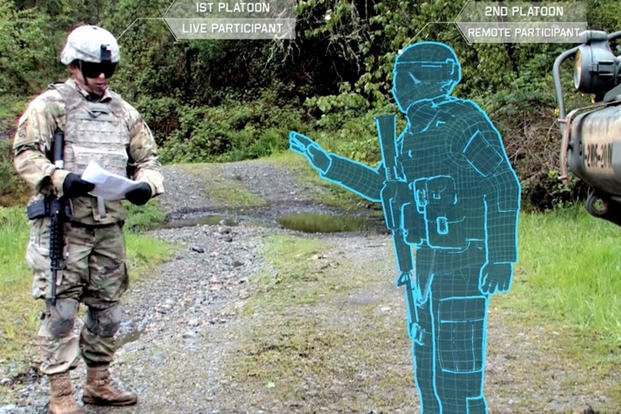Infantry squads will soon experience combat training simulations that feature an enemy capable of learning soldiers' tactics and habits, so the battle is never the same twice.
Army modernization officials are counting on this type of realism from the Microsoft-built Integrated Visual Augmentation System (IVAS), which is scheduled to be ready for fielding in the fourth quarter of fiscal 2021.
IVAS will equip infantry and other close-combat units with a sophisticated set of tactical glasses that will display a soldier's weapon sight reticle and other key tactical information they will take into battle.
But the advanced system will also offer a synthetic training environment that allows soldiers and small units to set up an augmented reality training scenario almost anywhere, Brig. Gen. Anthony Potts, commander of Program Executive Office Soldier, told defense firms at a recent Adaptive Squad Architecture industry day.
"I need an E-5 or an E-6 to be able to set up his own training. ... They can walk in, they can scan a room and they can download that scan. And he can go in there and put his avatars -- however big a force that they want to go against -- and they can populate that room and have a four-man stack go in and clear that room," Potts said.
Many younger soldiers are used to playing high-quality, first-person shooter games, but what's different about IVAS is that it will use machine learning and artificial intelligence to control the "behaviors of the avatars that our soldiers are going to go against," he said.
"You know the way we have done things in the past -- you learn behaviors and finally you realize every time I go in to a room, the same avatar is in the same place ... and I finally realize I can just stick my weapon around the corner and shoot him, and now I am the hero of the day," Potts said.
"AI is also going to ensure that those avatars will begin to learn how you clear a room, so the second time you go in there and you think that avatar is going to be behind the door just like he was the first time, he's not," he said. "He is going to have moved himself and given himself a position of advantage."
The Army awarded a $480 million contract to Microsoft in late 2018 to make this a reality for close-combat units.
Modernization officials have scheduled "Soldier Touchpoint 2" for late October so soldiers can do another hands-on evaluation of IVAS.
"I can tell you, we know we can do everything we need to do with IVAS," Potts said, expressing his confidence to defense reporters.
"I know I can technically meet all the requirements, but what we really care about after that, is do the soldiers love it? Do they want to wear it? Is it something they want to fight with? Because if they don't, we just wasted a lot of taxpayer dollars," he said. "So, our number-one criteria ... is do soldiers love it, and that is what we are driving toward."
-- Matthew Cox can be reached at matthew.cox@military.com.













